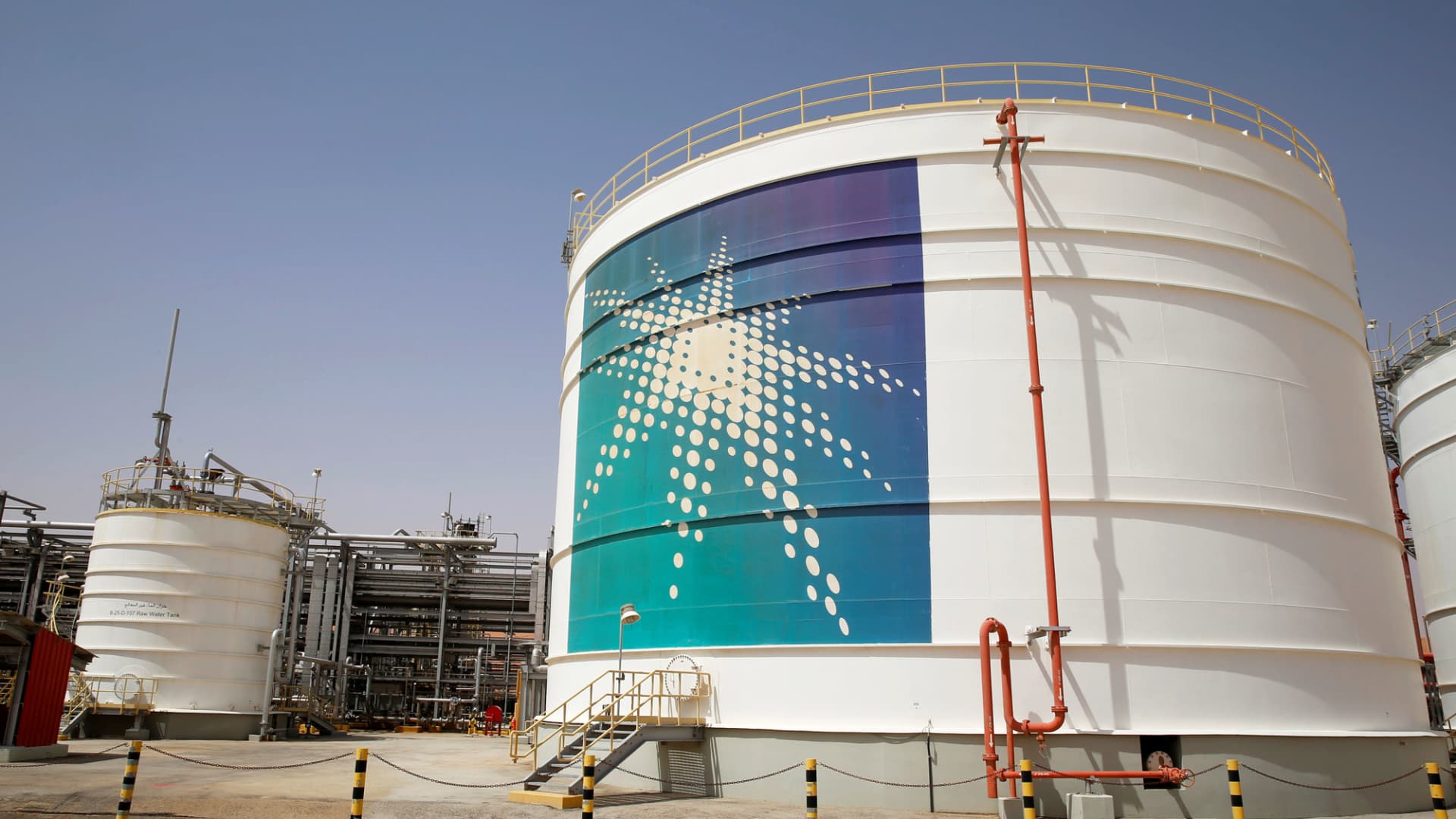Saudi state oil giant Aramco reported 112.81 billion riyal ($30.07 billion) in net profit in the second quarter, a drop of nearly 40% from the same period of last year amid a decline in hydrocarbon prices.
Second-quarter profit nevertheless came slightly above analyst expectations near $29.8 billion in an Aramco-supplied poll.
In a filing to the Saudi stock exchange — known as Tadawul — the company said the substantive fall was due to lower crude oil prices and weakening refining and chemicals margins. The oil giant said it will be paying out a base dividend totaling $19.51 billion for the second quarter.
“This is still a strong financial position. Yes, it’s not as astonishing as the results that we saw last year – but this is aligned with the overall industry trend,” Carole Nakhle of Crystol Energy told CNBC’s “Capital Connection” on Monday.
The net income figure was a 38% decline from the previous year’s second-quarter earnings, which had hit a jaw-dropping net income of $48.4 billion. At the time, the second-quarter 2022 result was up 90% on the year, on the back of the energy price surge triggered by Russia’s war in Ukraine.
The recent decline in profitability was in line with industry trends. British oil giant BP reported a nearly 70 percent year-on-year drop in second-quarter profit last Tuesday, while ExxonMobil, Shell and French oil major TotalEnergies also reported steep drops in earnings as weaker oil prices filter through the sector.
“At Aramco you also have to factor in the decline in production,” Nakhle said.
Saudi Arabia announced a 1 million barrel per day production cut in June, coming into effect in July — which has since been extended across both this and next month. The decline “can be extended or extended and deepened” beyond September, according to the Saudi Press Agency. The cut adds to 1.66 million barrels per day of declines that the Organization of the Petroleum Exporting Countries are putting in place until the end of 2024.
“It has definitely put an award pressure on prices,” Nakhle said. “Those announced cuts are helping OPEC+ in achieving its long-promoted mantra of achieving market stability,” she said, calling $80USD a “highly desirable” price floor for Saudi Arabia.
Oil prices are expected to increase through the third and fourth quarters. Top forecaster Goldman Sachs expects Brent prices to top $86 a barrel by December and $93 per barrel by next year, as strong demand and OPEC+ supply deficits tighten markets.

